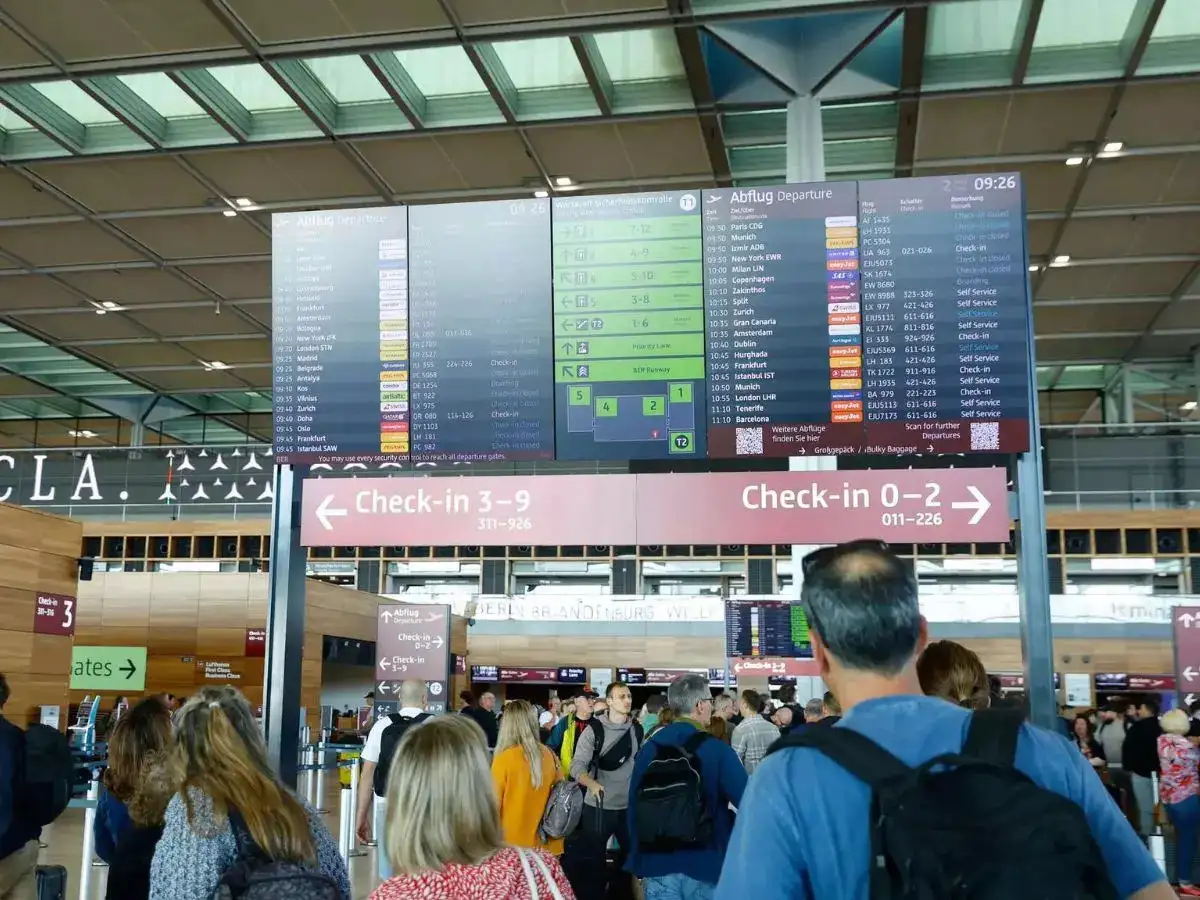A cyber-related software failure caused widespread chaos at several of Europe’s busiest airports this weekend. Automated check-in and boarding systems went offline at hubs in London, Brussels, and Berlin after the provider of those systems experienced a cyber-disruption. The fallout left many passengers stranded, flights delayed, and airport staff scrambling to manage operations manually.
What Happened
- The disruption originated with Collins Aerospace, a provider of check-in and boarding software used by multiple airlines. Their “MUSE” (Multi-User System Environment) software reportedly malfunctioned due to a cyber-related incident.
- Because of the software failure, electronic check-in, baggage drop and boarding pass printing systems stopped working. Airports were forced to fall back on manual procedures: handwritten boarding passes, manual tagging of luggage, and staff manually verifying passenger information.
- Among the airports hit hardest were those in London (Heathrow), Berlin (Brandenburg), and Brussels. These saw flight cancellations, delayed departures, long queues, and disrupted schedules. Some airports reported dozens of flights cancelled or significantly delayed, especially those where digital check-in was standard.
Response and Mitigation
- Airports mobilized extra staff to help with manual check-in operations and baggage handling. While this provided some relief, the delays remained substantial, especially for travelers who did not check in online or had checked baggage.
- Passengers were advised to check flight status in advance and to arrive well ahead of departure, given the possibility of long lines and slower processing.
- By early Sunday, disruptions were easing. Some airports reported that many flights had resumed, though delay times were still elevated compared to normal. The greatest continuing disruption was in Brussels, where cancellations and delays remained more frequent than in other locations.
What This Exposes
- Vulnerability of Digital Infrastructure: The event highlighted how reliant modern air travel is on third-party software providers. A failure at one service provider cascaded into operational problems across several countries.
- Single Point of Failure Risk: Because multiple airports depend on the same software system, if that software fails—whether due to attack, malfunction or other causes—the impact multiplies quickly.
- Preparedness for Manual Operations: While the fallback to manual processes helped ease some issues, the strain was obvious. Airports with better preparedness and redundancy in their systems handled the disruption better.
Wider Implications
- Regulatory and cybersecurity bodies are now investigating the source of the cyber-incident, seeking to determine how it infiltrated or disrupted the provider’s systems.
- Airlines and airport operators will likely rethink their dependencies on single software vendors and strengthen contingency planning. Some may accelerate investment in redundant systems or procedures that can immediately switch over when automated systems fail.
- Passenger confidence may waver during periods of uncertainty; many travellers expressed frustration over the lack of information and the slow pace of resolution during the worst of the disruption.
Looking Ahead
Travelers should expect some residual disruption in the near term. Even as software providers work to restore full functionality, manual workarounds will likely remain necessary in certain locations.
Airports and cybersecurity agencies are under pressure to not only resolve this incident but also to prevent similar failures in future. That may mean stricter requirements for disaster-recovery capabilities, more robust security audits, and clearer protocols for communication during system outages.
















Leave a Reply